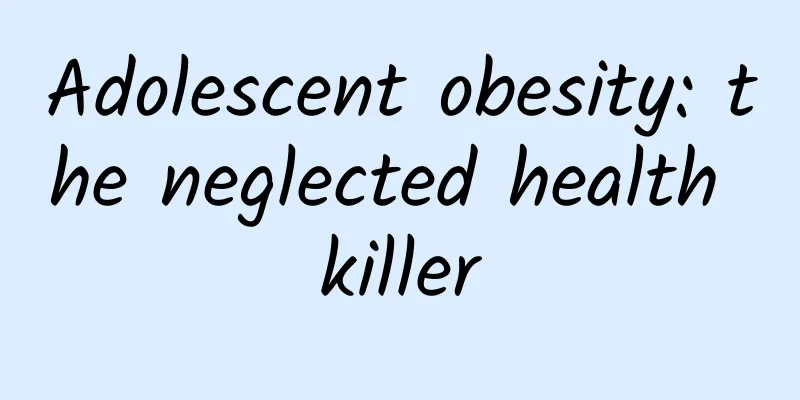Adolescent obesity: the neglected health killer

|
Today, a chubby 15-year-old boy came to see a doctor. His parents pointed at his belly and asked me, "Doctor, what's growing on the child's belly? Is it a skin disease?" I took a closer look and told her that the child did not have any skin disease. It was a crack in the skin caused by obesity. It is a kind of expansion pattern, also known as atrophy pattern. It is caused by the same reason as the stretch marks on the abdomen of pregnant women. It is caused by obesity or sudden weight gain, which destroys the elastic fibers and collagen fibers in the dermis. It has no effect on physical health. If you feel it is not good-looking, you can apply scar cream externally, which may alleviate it. In recent years, the obesity problem among young people has become increasingly serious. China's obesity rate has doubled in the past decade. Today we will talk about the causes, hazards and countermeasures of obesity. 1. Definition and Current Status of Obesity Obesity is not simply "overweight", but a chronic metabolic disease caused by excessive accumulation of body fat. Body mass index (BMI) is often used in medicine. The body mass index is calculated as BMI = weight (kg) / height (m)². When BMI ≥ 24 is overweight, ≥ 28 is obese. However, young people need to be comprehensively evaluated in combination with waist circumference (male ≥ 90cm, female ≥ 85cm) due to their high muscle mass or localized fat accumulation (such as abdominal obesity). The overweight rate of Chinese youth aged 18-29 has reached 32.3%, and the obesity rate is about 13.2% (Report on the Nutrition and Chronic Disease Status of Chinese Residents). "Currently, about 19% of adolescents aged 6 to 17 and about 10.4% of children under 6 are overweight and obese." Shen Hongbing, academician of the Chinese Academy of Engineering and director of the Chinese Center for Disease Control and Prevention, introduced (May 2024) that obesity is an important risk factor for many chronic diseases such as diabetes, tumors, and bone and joint diseases. 2. Five major causes of obesity: 1. Food temptation Nowadays, the popularity of fast food culture, fried foods, sugary drinks and takeout has caused young people to consume far more calories per day than they consume. A meal of hamburgers and fries can contain up to 1,000 calories, which takes 2 hours of running to burn off. 2. Single lifestyle Young people often sit for long periods of time to study, work, or watch TV shows all night long, and rely on transportation when going out. They have little activity and spend more time in static than in dynamic activities, which leads to a continuous decline in basal metabolic rate. The WHO pointed out that 81% of young people in the world do not get enough exercise. 3. Staying up late Staying up late has become a norm for modern young people, which leads to an increase in ghrelin and a 20% increase in appetite. When eating at night, people tend to choose high-sugar and high-fat foods. Studies have shown that long-term staying up late and insufficient sleep can easily lead to bad habits such as binge drinking, drinking and smoking. 4. Stress eating Generally speaking, it refers to using eating as a way to comfort one's nervousness, irritability and other negative emotional behaviors. Academic, employment, and social pressures increase cortisol levels, triggering "emotional overeating" and forming a "stress-obesity-depression" closed loop. 5. Environmental impact Including genetic and family influences, adolescents whose parents are obese have a three-fold increased risk of the disease; environmental factors such as family high-fat and salt diet habits and lack of sports facilities in the community are also important factors in causing adolescent obesity. 3. The harm of obesity: a comprehensive blow from physical to psychological 1. Metabolic disorders: Insulin resistance leads to diabetes; dyslipidemia leads to atherosclerosis; non-alcoholic fatty liver disease (accounting for 35% of young patients). 2. Skeletal system: For every 1kg increase in body weight, the load on the knee joint increases by 4kg, and the number of cases of arthritis in young people increases sharply. 3. Reproductive health: The risk of polycystic ovary syndrome in women and decreased testosterone levels in men increases. 4. Mental health: Obese youth have a 55% increased risk of depression, and problems such as inferiority complex and social avoidance are common. 5. Long-term hazards: For those who are obese in youth, the mortality rate from cardiovascular and cerebrovascular diseases increases by 2 times after middle age. I explained the causes and harms of obesity to the parents, and they nodded repeatedly. The parents asked, how can we help our children lose weight? 4. Scientific weight loss: five steps are needed 1. Adjust your diet and restructure it: 211 diet. Eat 2 fistfuls of vegetables, 1 fistful of protein, and 1 fistful of staple food (brown rice and potatoes are preferred) for each meal; control sugar intake, replace milk tea with sugar-free tea, and choose low-GI fruits (such as apples and blueberries); revolutionize cooking, replace frying with steaming and cold dishes, and use spices instead of high-salt sauces. 2. Enhance the experience of exercise: fragmentation and fun. Accumulate 30 minutes of brisk walking/stair climbing every day (can be completed in 3 times), add 2 resistance training (such as squats, plank support) per week; add social sports such as dancing and cycling to improve the adherence rate. 3. Improve sleep: The golden time for restoring metabolism. Go to bed before 23:00 and ensure 7 hours of sleep; stay away from electronic devices 1 hour before bedtime and use meditation to help you sleep. 4. Psychological empowerment: Break the vicious cycle of "self-guilt". Keep a diet and mood diary to identify stress-eating triggers; seek psychological counseling or mindfulness training. 5. Medical intervention: Professional help is needed when necessary. If BMI is ≥ 32 or there are complications such as diabetes, it is necessary to consult a professional institution in time and consider medication (such as GLP-1 receptor agonists) or surgical treatment. Finally, I would like to tell parents and teenagers that they should not be too hasty in losing weight. V. Action Plan for Young People 1. Set small goals: lose no more than 4 catties per month and avoid extreme dieting. 2. Find a support system: join a health community and develop a diet plan with your family. 3. Regular monitoring: measure waist circumference and blood pressure every month, and check blood sugar and blood lipids every year. The parents took their children away. Looking at their obese bodies, I want to say: Obesity is a preventable and controllable chronic disease, and adolescence is the golden window for intervention. Through systematic adjustments to lifestyle, we can not only reverse health risks, but also cultivate self-management skills that benefit us for life. As a doctor, I hope that families, schools, and society can work together to create an environment that supports healthy choices for young people. 【Author: Zhang Yucai, deputy chief physician, Qihe County Traditional Chinese Medicine Hospital, Dezhou City, Shandong Province】 |
>>: There are problems with both the heart and leg blood vessels. Can they be solved at once?
Recommend
Introduction to preventive measures for common breast diseases in women
Nowadays, breast diseases in women have become yo...
What is the real reason for lower back pain after cesarean section?
Many pregnant women are willing to give birth thr...
App Annie: 2020 Mobile Report
App Annie released its 2020 Mobile Report, showin...
Why does an ankle sprain take so long to heal?
This is the 2662nd article of Da Yi Xiao Hu In th...
Uterine prolapse diagnosis and treatment
Many people are unwilling to receive treatment fo...
What are the seven foods that women with kidney deficiency should eat?
When the yin and yang of the kidneys are out of b...
Why is my period painful?
Menstruation is a physiological reaction that eve...
One third of the liver was "eaten", and the murderer was actually a "fish"?
According to Guilin Evening News, Ms. Feng from Q...
How to prevent cervical cancer?
First, vaccination In fact, we all know that vacc...
After testing 7 types of hair masks, what are the differences between them and conditioners and hair oils?
Some time ago, we reviewed hair conditioners and ...
What does it mean to dream about a girl?
Dreams have a lot to do with a person's daily...
How to do TCT examination?
TCT examination is a very good examination method...
The reason why you can't go to someone else's house when you have a miscarriage
Female miscarriage is a very painful thing, which...
Ovulation is usually the first few days after menstruation ends.
Some women will have an ovulation period after me...
Causes of breast hyperplasia during pregnancy
In fact, many female friends should go to the hos...









